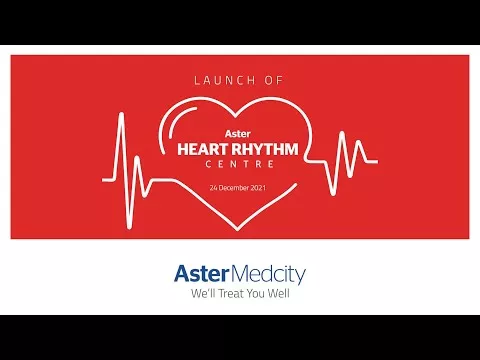What is Head-Up Tilt Test?
The Head-Up Tilt Test, also known as the tilt table test, is a medical procedure used to evaluate and diagnose the cause of fainting spells or episodes of unexplained loss of consciousness. It is primarily conducted to assess orthostatic hypotension, a condition characterized by a sudden drop in blood pressure upon standing up. During the tilt table test, the patient is secured to a special table that can be tilted to different angles, ranging from a horizontal position to an upright position of about 60 to 80 degrees. The table is equipped with safety straps to prevent the patient from falling. The patient's heart rate, blood pressure, and other vital signs are continuously monitored throughout the procedure.The test begins with the patient lying flat on the table for a baseline measurement of their vital signs. Then, the table is slowly tilted upward, simulating the effect of standing up. The tilt can be maintained for several minutes while the patient's vital signs are monitored.
If the patient experiences symptoms such as lightheadedness, dizziness, fainting, or a drop in blood pressure during the test, it may indicate an underlying condition such as orthostatic hypotension or vasovagal syncope. These conditions can be caused by various factors, including autonomic nervous system dysfunction or dehydration. The Head-Up Tilt Test helps doctors assess how the patient's body responds to changes in position and aids in the diagnosis and management of the underlying cause of their symptoms. The results of the test, combined with the patient's medical history and other diagnostic tests, help guide the appropriate treatment plan for the individual.
Why and when Head-Up Tilt Test is recommended?
The Head-Up Tilt Test is recommended in specific situations where a patient experiences unexplained fainting spells or episodes of loss of consciousness. It is conducted to help diagnose the cause of these symptoms and guide appropriate treatment. Here are some common scenarios in which the test may be recommended:
- Evaluation of Syncope: Syncope refers to a temporary loss of consciousness typically caused by a sudden drop in blood pressure. If a patient has experienced recurrent episodes of syncope and the cause is unclear, a tilt table test can be performed to assess for conditions like orthostatic hypotension or vasovagal syncope.
- Diagnosis of Orthostatic Hypotension: Orthostatic hypotension is a condition characterized by a significant drop in blood pressure when standing up. Symptoms may include dizziness, lightheadedness, or fainting upon assuming an upright posture. The tilt table test can help determine if orthostatic hypotension is the underlying cause and assess its severity.
- Assessment of Autonomic Nervous System Disorders: The autonomic nervous system plays a crucial role in regulating blood pressure and heart rate. Dysfunction of this system can lead to symptoms such as lightheadedness, fainting, and variations in blood pressure. The tilt table test can provide valuable information about autonomic nervous system disorders, including postural orthostatic tachycardia syndrome (POTS) or autonomic neuropathy.
- Evaluation of Suspected Neurocardiogenic Syncope: Neurocardiogenic syncope, also known as vasovagal syncope, occurs when there is an abnormal reflex response that leads to a sudden drop-in heart rate and blood pressure. The tilt table test can help provoke and diagnose this condition by reproducing the symptoms during the procedure.
It's important to note that the decision to recommend a Head-Up Tilt Test depends on a thorough evaluation of the patient's medical history, physical examination, and other relevant diagnostic tests. A healthcare professional, typically a cardiologist or neurologist specializing in autonomic disorders, will determine if the test is appropriate based on the individual's specific symptoms and clinical presentation.
How does Head-Up Tilt Test differ from other tests?
The Head-Up Tilt Test differs from other tests in its specific methodology and focuses on assessing the body's response to changes in position. Here are some ways in which the Head-Up Tilt Test differs from other diagnostic tests:
- Positional Evaluation: Unlike many other tests that are conducted with the patient in a supine (lying down) position, the tilt table test involves tilting the patient to an upright position. This allows for the assessment of orthostatic changes, mimicking the act of standing up, and observing how the body responds to the change in posture.
- Provocation of Symptoms: The tilt table test is designed to provoke and reproduce symptoms such as lightheadedness, dizziness, or fainting that a patient may experience in their daily life. By inducing these symptoms in a controlled environment, healthcare professionals can observe and monitor the physiological changes occurring during an episode.
- Continuous Monitoring: Throughout the tilt table test, the patient's vital signs, including heart rate, blood pressure, and sometimes electrocardiogram (ECG) readings, are continuously monitored. This allows for real-time observation of any fluctuations or abnormalities in these parameters as the tilt angle changes.
- Duration of Testing: The tilt table test typically involves tilting the patient at various angles for an extended period, usually ranging from 10 to 45 minutes. This extended duration allows for a thorough evaluation of the patient's response to changes in posture and increases the likelihood of provoking symptoms if they are present.
- Diagnostic Focus: The primary goal of the tilt table test is to help diagnose the cause of fainting spells or unexplained loss of consciousness. It specifically focuses on assessing conditions related to blood pressure regulation, such as orthostatic hypotension, autonomic nervous system dysfunction, or vasovagal syncope. Other diagnostic tests, such as electroencephalogram (EEG) or echocardiogram, may be utilized to evaluate different aspects of a patient's condition.
It's important to note that the Head-Up Tilt Test is just one tool in the diagnostic process. The decision to perform this test is based on the patient's clinical history, symptoms, and the judgment of the healthcare professional. Other tests and evaluations may be conducted alongside or following the tilt table test to provide a comprehensive understanding of the underlying condition.
FAQs
At Aster Hospitals we provide the highest quality of care and a transformative experience for all your healthcare needs. With our network of multi-speciality hospitals, specialised doctors, and world-class technology, we bring global standards of medical care to our patients.
Why is a Head-Up Tilt Test done?
A Head-Up Tilt Test is performed to evaluate the cause of unexplained fainting episodes or lightheadedness. It helps determine if a drop in blood pressure or heart rate is responsible for the symptoms. The test can aid in diagnosing conditions such as vasovagal syncope, postural orthostatic tachycardia syndrome (POTS), and certain autonomic nervous system disorders.
How long does a Head-Up Tilt Test take?
The duration of a Head-Up Tilt Test can vary, but it typically lasts between 30 minutes to an hour. The exact duration depends on the specific protocol followed by the medical team and how quickly symptoms are provoked.
What can I expect during the Head-Up Tilt Test?
During the test, you may experience symptoms such as lightheadedness, dizziness, palpitations, or even fainting. These symptoms are often induced intentionally to help diagnose the underlying cause. The medical team will closely monitor your vital signs and symptoms throughout the procedure to ensure your safety.
Is the Head-Up Tilt Test a safe procedure?
The Head-Up Tilt Test is generally considered safe. However, like any medical procedure, there are some risks and potential complications, although they are rare. These can include a drop in blood pressure leading to fainting, irregular heart rhythms, and extremely rarely, more serious complications such as a heart attack or stroke.
Blogs
The source of trustworthy health and medical information. Through this section, we provide research-based health information, and all that is happening in Aster Hospital.







